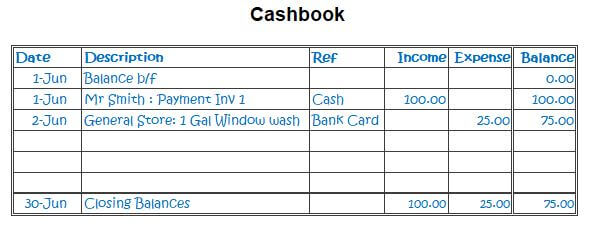

Still, the result in balance will be the same.Double-entry accounting, also known as double-entry bookkeeping, is a set of accounting rules. If the fleet owner would have bought the trucks in cash, then a credit entry has to be made in cash account and a debit entry to the inventory account. We see that the debit entry increases the inventory asset balance and credit entry increases the accounts payable liability balance with the same amount.ĭouble entries can also affect the same class of accounts. As these are credit purchases, an entry with an equal amount has to be made on the credit side in accounts payable. Entries are in respective accounting ledgers.Īs the business has accumulated the assets, a debit entry will be made in inventory with the amount equal to the cost of trucks i.e. For the transaction, there are two activities, one is credit purchase of the trucks and another is an addition in new inventory. Explain in respect to the Double Entry System.Īns: This is a credit purchase of trucks. The estimated life of trucks is 10 years. All new trucks will be used in daily business operations and will not be sold for the next 10 years. Q: A fleet owner purchases delivery trucks on credit.

Details of the first year can be compared with the second year, deviations found any during comparison can be worked on. The recorded details can be used for comparison purpose as well.By following this system the company can keep the accounting records in detail which eventually helps in controlling.Profit and loss suffered during the Year can be calculated with details.
#Doubl entry bookkeeping examples trial#
This system increases the Accuracy of the accounting, through the trial balance device.A debit entry might increase one account and at the same time decrease another account. All debits do not always equate to increase the account nor do all credits equate to decrease the accounts. While posting an accounting entry, an entry on the left side of the account ledger is a debit entry and right side entry is a credit entry.įinally, to complete an entry the total of the Debit side and the Credit side should be equal. Debit and Creditĭebits and Credits are essentials to enter data in a double entry system of accounting and book-keeping. The accounting and book-keeping is a continuous process of tracking changes in each account as the company continues to do its operations. There are majorly seven types of accounts wherein all the business accounting entries and transactions are classified. Under a systematic accounting process, the activities are recorded into various accounts to keep the data bifurcated and classified under account heads. Accounting and book-keeping record this event. A transaction is an event taking place between two economic entities, such as customers or vendors and businesses. The accounting and book-keeping process measures, records and communicates day to day financial activities. Thus, it also lowers the rate of errors by detecting them on a timely basis. This method of accounting and book-keeping results in the accurate depiction of financial statements. This means that the sum of all Debit accounts must be equal to the sum of Credit accounts. A debit entry in one account gives the opposite effect in another account by credit entry. (Source: merchantmaverick) Recording Systemĭouble entry system records the transactions by understanding them as a DEBIT ITEM or CREDIT ITEM.

Every financial transaction has an equal and opposite effect in at least two different accounts.Įquation can be: ASSETS = LIABILITIES + EQUITY It’s a fundamental concept encompassing accounting and book-keeping in present times. So, this will increase the assets for cash balance account and simultaneously the liability for loan payable account will also increase. For instance, a person enters a transaction of borrowing money from the bank. 4 Solved Example For You Browse more Topics under Basic Accounting Proceduresĭouble Entry System of accounting deals with either two or more accounts for every business transaction.


 0 kommentar(er)
0 kommentar(er)
